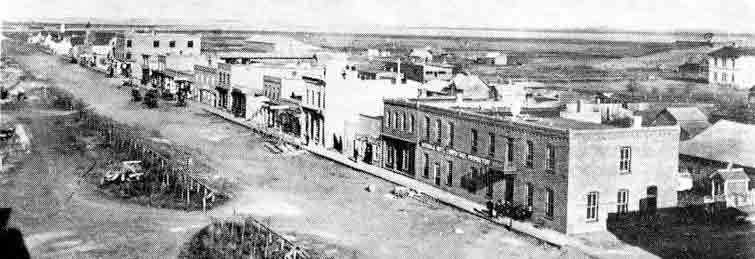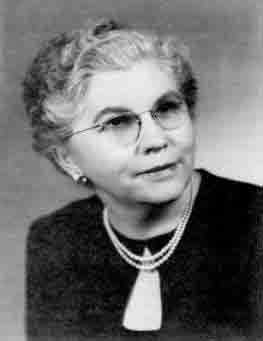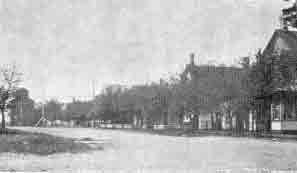THE THOUSANDS OF PEOPLE
who have made Hartney their home over the years, since its inception in
1892, have been a fascinating group, full of strength and wisdom, wit
and vigour, kindness and foresight.
Some of these people are also significant, key figures in our history.
They have either come to define Hartney by their very being, or they
have changed Hartney through their actions and decisions.
This booklet recognizes and honours these people.
On the following pages you will encounter the collection of
Hartney-ites who have made a real difference. The useful way we have
chosen to explore and describe these people has been to focus on
traditional occupations and avocations. With one key person typically
defining each entry (a merchant, a school teacher, a brick-maker, etc.)
we expect that the rich and deep experience of life and work in Hartney
can be effectively and succinctly defined.
The people profiled in this booklet are special, but we have also
endeavoured to feature others with slightly lesser claims to
significance who help define or enhance a certain entry. And where
possible we have also added information and details on certain
occupations and avocations so that readers can come to fully understand
and appreciate who these people were, what they did, and how they did
it.
This booklet was developed through a project called Notable People, an initiative of the Historic
Resources Branch of Manitoba Culture, Heritage and Tourism. That
project allowed us to develop a comprehensive inventory of potential
candidates, and to carefully analyze and assess the relative
significance of the 229 individuals profiled. We are grateful to the
Province for this support and direction.
It is easy at the turn of the 21st century to forget the
origins and qualities of Manitoba’s smaller communities. But at their
beginnings these were very industrious places, with young, ambitious
people, full of life, and with great dreams for their new home. It is
also important to recall that these places were also self-sustaining,
with nearly everything one would need made at hand. Much of what was
required for daily life was manufactured here, from bricks to dresses,
harnesses to flour. A place like Hartney in 1900 was active, lively and
fun.

East Railway Street, looking north, ca.
1902.
It is
important to set the stage for the following stories, and we are
fortunate to have the words of Hazel McDonald Parkinson, who in 1957
created our first local history book, The Mere Living.
We quote extensively from that remarkable little book, which we highly
recommend to anyone interested in small-town life in the late 1800s and
early 1900s:
“Like most prairie towns it was placed to serve the agricultural
neighbourhood that surrounded it. Yet it soon developed a community
life of its own, a composite of the lives of the people who came to it
to make a living, and who, in building homes on its streets, built also
a part of Manitoba’s tradition. How that community life became the sum
of its parts is the story that unfolds as we recall the men and women
who came west in the early nineties.
The influx of businessmen, shopkeepers, blacksmiths, implement dealers,
grain buyers, carpenters, livery-men, notaries, clergymen and doctors
that would provide services for one another and for the farmers in the
Hartney district, followed the pattern that was being repeated over and
over in similar centres of Manitoba in the eighteen eighties and
nineties, where town after town was being established, as the web of
railway lines spread through the province.
The newcomers might differ in education, cultural background, wealth
and ability, but most of them had two things in common: youth and
enterprise. Most of the town builders of that period were in their
twenties or thirties. Older men and women were the exceptions and
usually came to the west with younger sons or daughters.
Aunt Tena
Hopkins told of her first days in the new town, when, from the windows
of her home above the store she could watch buildings, such as the new
C.P.R. station, being erected and of a walk she took with Mrs. Butchart
and Miss Margaret Woodhull who came to assist her brother, Dr.
Woodhull, in the drugstore.

Hazel
McDonald Parkinson, author of The Mere Living.
Aunt Tena
crossed the street to Butchart’s hardware, then joined by
Mrs. Butchart she called at the drugstore for Miss Woodhull. They
passed Bradley’s barber shop, Douglas’ harness shop, Barter’s butcher
shop, the Hotham-Blair livery stable, P.G. Drost’s flour and feed
store, and the O’Brien Avondale Hotel. They called for the mail at the
Hartney-Dickson store and turned east on Poplar Street where Mrs.
Butchart pointed out Jos. Young’s hardware and his house on the corner
of Spencer Street, with H. Hammond’s house to the north and S.H
.Dickon’s house to the east.
Turning south on that corner, they passed Dr. McEown’s new house beside
that of Jos Young, examined the half finished Methodist church and the
parsonage beside it. They looked to the southeast toward the Hartney
farm where the Beynon family lived and eastward from the church to the
David Leckie home.

Spencer
Street, looking south, ca. 1900.
They turned west after passing the church and reaching East Railway
Street again, walked north past the Leckie lumber yard, along a
footpath that was being worn by the feet of the townsfolk into a dusty
road that caused them to speak of the need for sidewalks.
From the top floor of the Hopkins store, the prairie could be seen
stretching in the haze of the Turtle Mountain on the south, to the
river to the west and north, outlined by the green woods along its
banks, and the east rolling endlessly toward the flat horizon. Around
the nearer farm homes the intenser green of newly planted shrubs and
small trees added variety to the landscape but did not obscure the
buildings huddled together on the farms.
Since that time, when the town began, Hartney’s people have been our
people, and its ways, on the whole, our ways. Goodly ways they have
been, that make us, who no longer actually reside in the town, happy to
look back to the years when Hartney was to us the core of Manitoba and
our home.”
|



